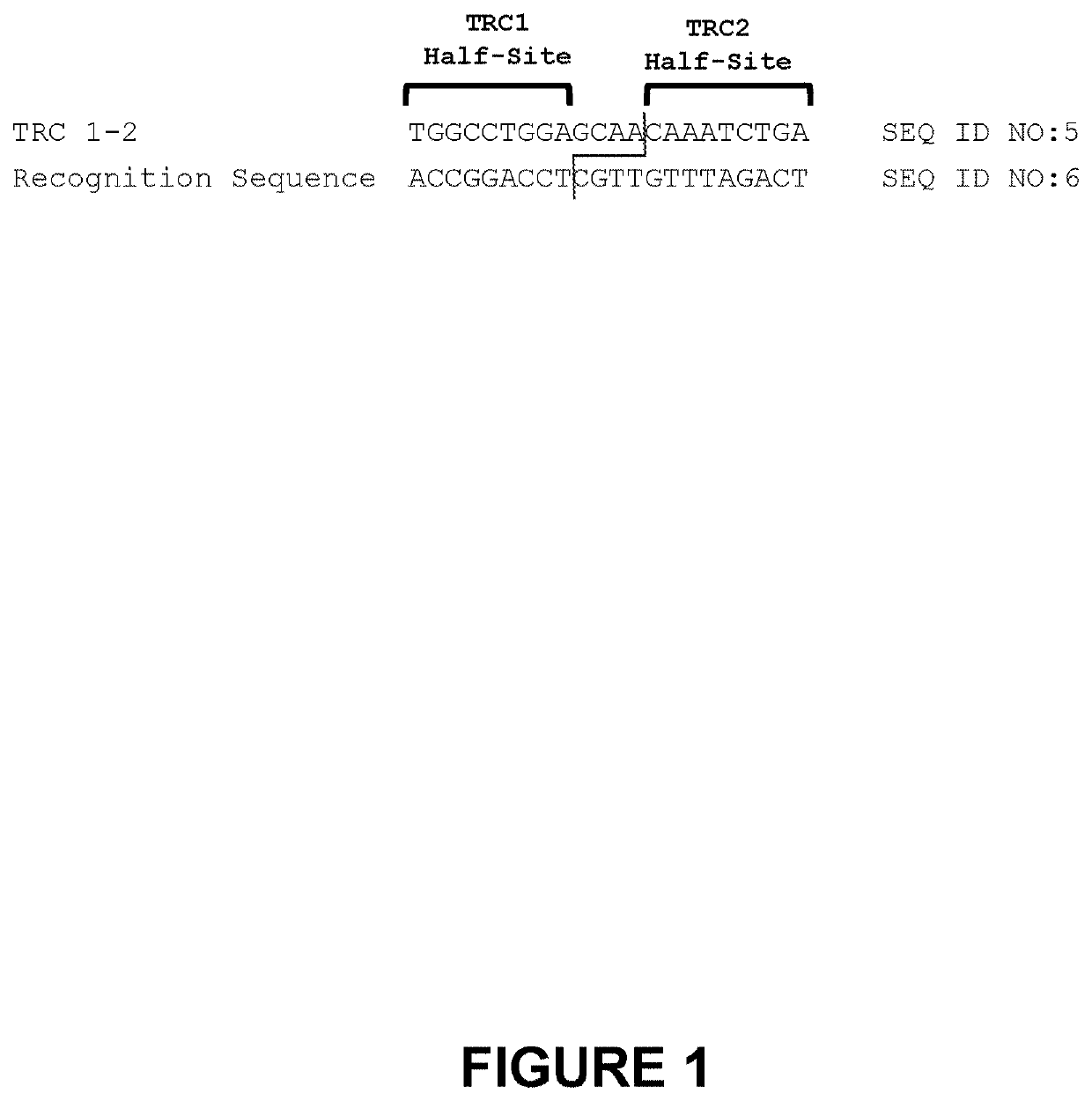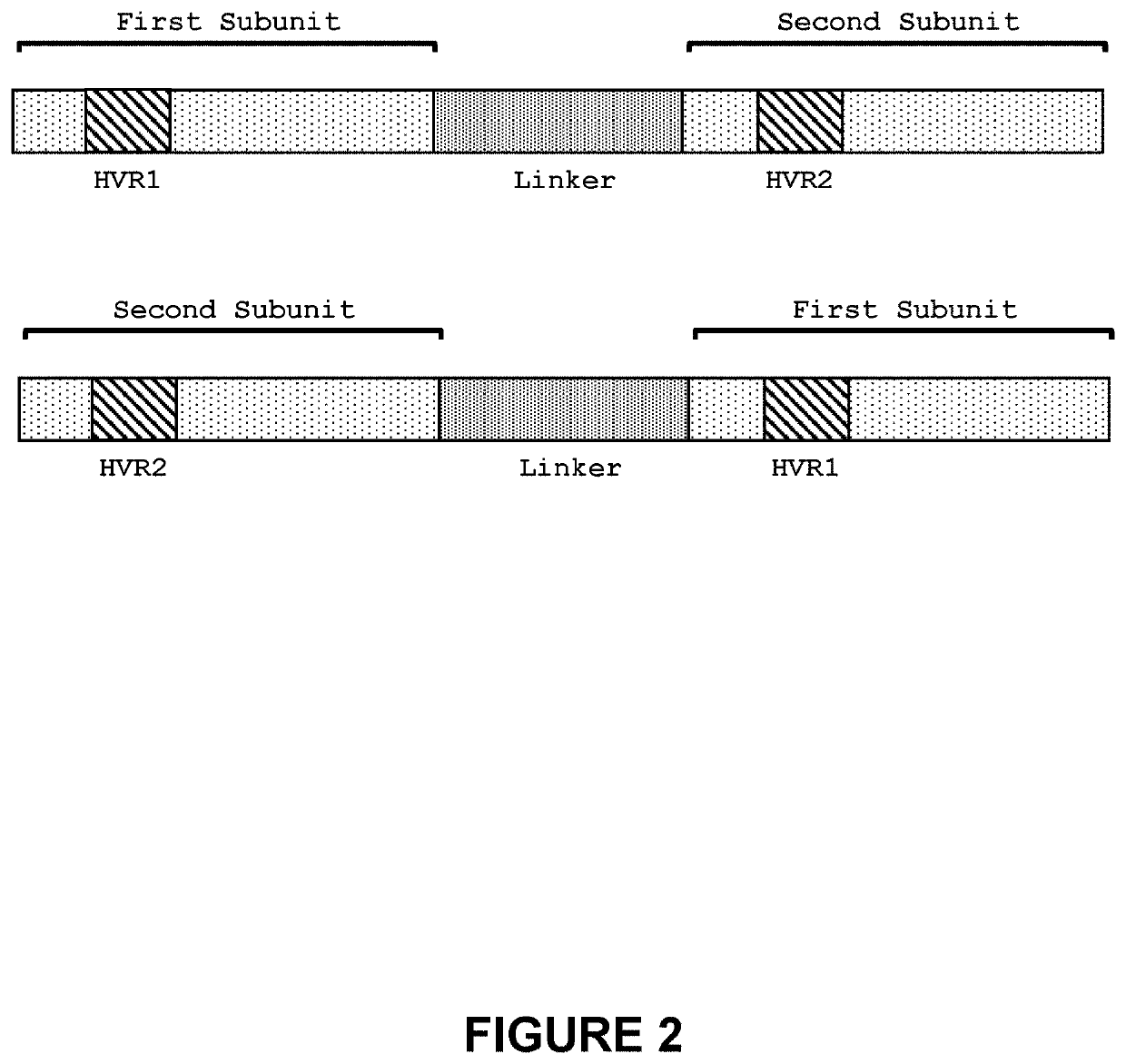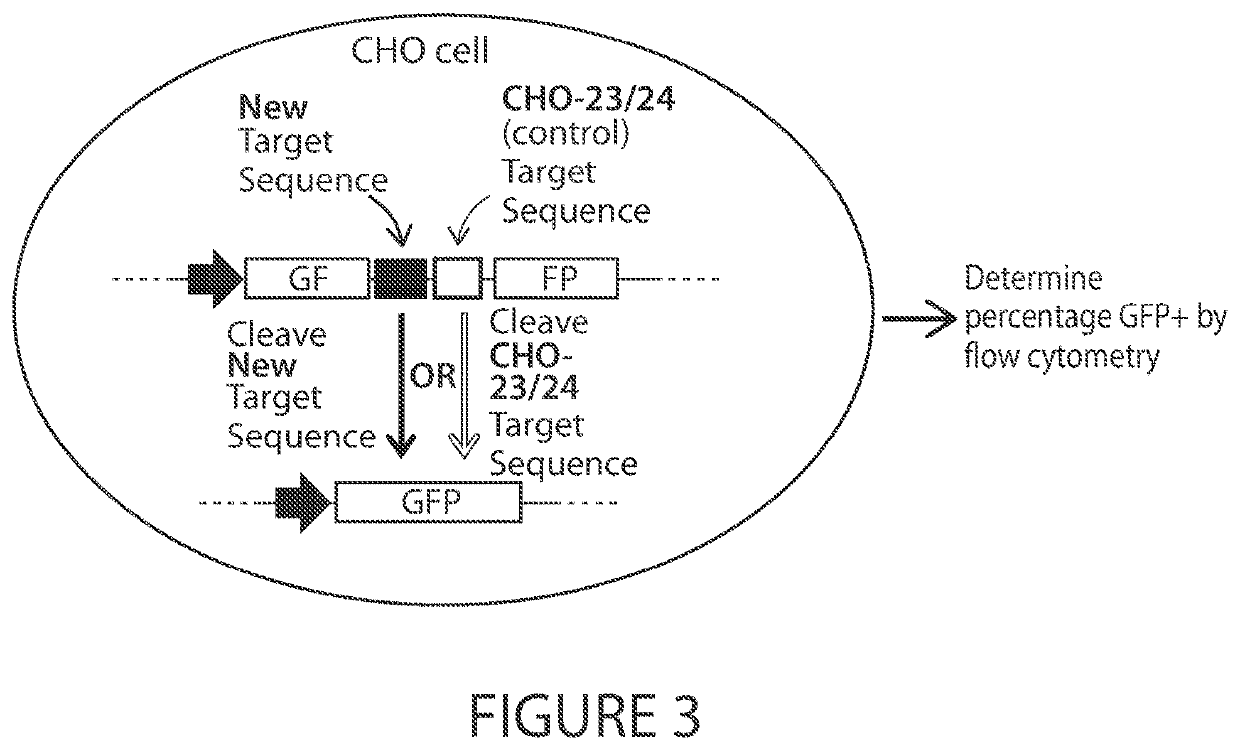Optimized engineered nucleases having specificity for the human t cell receptor alpha constant region gene
an engineered nuclease and human t cell receptor technology, applied in the field of optimizing engineered nucleases having specificity for human t cell receptor alpha constant region gene, can solve the problems of limited approach and limited immunotherapy with car t cells, and achieve the effects of promoting the introduction of exogenous polynucleotides, enhancing specificity, and disrupting gene function
- Summary
- Abstract
- Description
- Claims
- Application Information
AI Technical Summary
Benefits of technology
Problems solved by technology
Method used
Image
Examples
example 1
Characterization of Meganucleases Having Specificity For the TRC 1-2 Recognition Sequence
[0287]1. Meganucleases that Recognize and Cleave the TRC 1-2 Recognition Sequence
[0288]The second-generation TRC 1-2 meganucleases, referred to as TRC 1-2L.1592 (SEQ ID NO: 7) and TRC 1-2L.1775 (SEQ ID NO: 8), were engineered to recognize and cleave the TRC 1-2 recognition sequence (SEQ ID NO: 5), which is present in the human T cell receptor alpha constant region. Each of these second-generation meganucleases comprises an N-terminal nuclease-localization signal derived from SV40, a first meganuclease subunit, a linker sequence, and a second meganuclease subunit. A first subunit in each TRC 1-2 meganuclease binds to the TRC1 recognition half-site of SEQ ID NO: 5, while a second subunit binds to the TRC2 recognition half-site (see, FIG. 1). TRC1-binding subunits and TRC2-binding subunits each comprise a 56 base pair hypervariable region, referred to as HVR1 and HVR2, respectively.
[0289]The HVR1 r...
example 2
In vitro Analysis of Optimized TRC 1-2 Meganuclease
1. Evaluation of Gene-Editing Efficiency, Post-Editing Expansion, and Differentiation
[0305]In a first series of experiments, four optimized, second-generation TRC 1-2 meganucleases were screened for their gene-editing efficiencies, and for post-editing expansion and differentiation potential. Three different operators each evaluated all nuclease variants in T cells obtained from a different healthy human T cell donor. Apheresis material was sourced from donors K708, K799, and K6784 from Key Biologics (Memphis, Tenn.). K708 and K6784 T cells were processed according to the following protocol: T cell enrichment using human CD3 positive selection reagents (StemCell Technologies), stimulation using ImmunoCult anti-CD2 / CD3 / CD28 (StemCell Technologies) and nuclease RNA delivery using the 4D NucleoFEctor (Lonza). T cells from K799 were processed according to the following protocol: T cell enrichment using CD4 and CD8 microbeads and the Cli...
example 3
Evaluation of Optimized TRC 1-2 Meganucleases in CAR T Production
[0337]The TRC 1-2L.1592 meganuclease was further evaluated in a large-scale process run to determine if the production of CAR T cells at scale was improved versus the first-generation TRC 1-2x.87EE meganuclease.
[0338]The large-scale process used to generate allogeneic CAR T cells with TRC 1-2x.87EE started with a fresh Leukopak from a healthy, prequalified donor. The Leukopak product was washed to remove platelets before undergoing immunomagnetic enrichment of the target T cells. The enriched T cells were then washed into growth media and activated using an activation reagent. After a 3 day activation period, the cells were washed and concentrated in electroporation buffer. mRNA encoding TRC 1-2x.87EE was added and the mixture of cells and mRNA was processed through an electroporation device. The electroporated cells were diluted with growth media containing an AAV vector encoding the CAR insert gene. After an expansio...
PUM
| Property | Measurement | Unit |
|---|---|---|
| length scale | aaaaa | aaaaa |
| average particle diameter | aaaaa | aaaaa |
| time | aaaaa | aaaaa |
Abstract
Description
Claims
Application Information
 Login to View More
Login to View More - R&D
- Intellectual Property
- Life Sciences
- Materials
- Tech Scout
- Unparalleled Data Quality
- Higher Quality Content
- 60% Fewer Hallucinations
Browse by: Latest US Patents, China's latest patents, Technical Efficacy Thesaurus, Application Domain, Technology Topic, Popular Technical Reports.
© 2025 PatSnap. All rights reserved.Legal|Privacy policy|Modern Slavery Act Transparency Statement|Sitemap|About US| Contact US: help@patsnap.com



